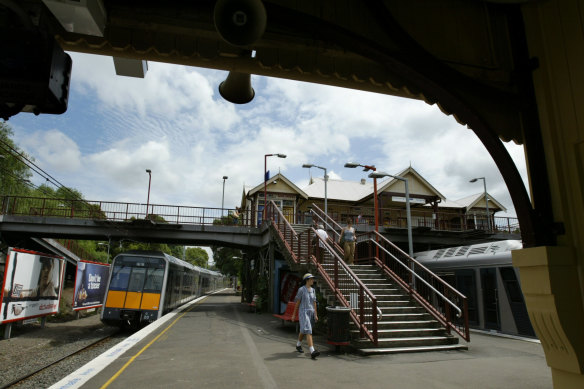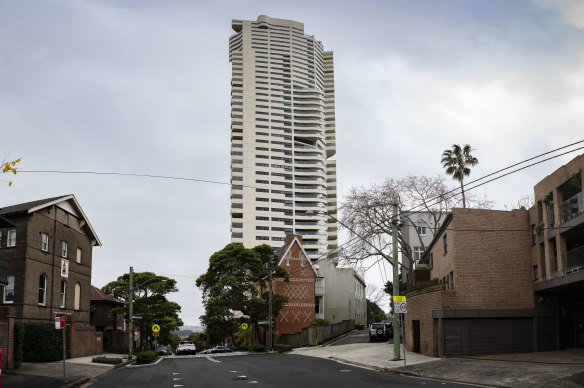This was published 5 months ago
The plan to squeeze 45-storey apartment buildings into Ku-ring-gai
Apartments up to 45 storeys high would be squeezed into a section of Ku-ring-gai under a council move to appease the state government’s demands for increased housing density by creating alternative plans to the transport-oriented development scheme.
Despite the TOD scheme being in place since May, and the council taking the Minns government to court over the policy, councillors will on Wednesday vote on options to be put on public exhibition that would significantly increase density in some areas while maintaining large swaths of low-density heritage housing.

Buildings could be zoned up to 45 storeys around Gordon station.Credit: Edwina Pickles
Ku-ring-gai Council staff have given councillors three alternatives to the TOD program that focus on protecting heritage conservation areas within the LGA, ranging from protecting 78 to 100 per cent of them.
The trade-off to those heritage conservation areas remaining untouched is significantly higher building heights in other parts of the suburbs.
Under the first option, labelled “safeguard and intensify”, the council’s target of 23,200 new dwellings would be achieved by shifting density out of heritage conservation areas and into established commercial zones mostly within 400 metres of train stations.
Sites already zoned for commercial use around Gordon train station would be allowed to reach up to 25 storeys, while 10 storeys would be allowed around Killara station, 15 around Lindfield station, and 12 around Roseville station.
The second option, called “preserve and intensify”, transfers more dwellings away from smaller town centres Roseville and Killara to the larger Gordon and Lindfield and all heritage conservation areas would be protected.
Buildings in Roseville and Killara would be allowed to be zoned up to 25 and 15 storeys respectively, while Gordon could have 45 storeys and Lindfield 35.
The third option expands “preserve and intensify” to commercial zones within 800 metres, not 400 metres, of train stations, resulting in lower building heights.
The state government’s TOD plan does not overrule local heritage laws, meaning tall buildings could not, for instance, replace a heritage-listed house, but the report said because the plan “specifically excludes heritage items and provides no incentive for them to be included within future development sites, they are effectively isolated”.

The famous Harry Seidler-designed Horizon apartment block in Darlinghurst stretches 43 storeys into the sky, less than the 45 on the table for Gordon.Credit: Wolter Peeters
The report highlights the council would still need to establish new public green space, sporting facilities and other infrastructure to meet the increased density.
The options, if approved, would bring Ku-ring-gai Council in line with the 12 other Sydney councils that produced amended density plans in line with the government’s transport-oriented development push.
The council’s new Liberal Mayor Christine Kay declined requests for an interview. In a statement, she said: “The mayor does not endorse proposals to councillors.
“As a council, we vote based on all the information before us and we will be listening to what the community thinks about the alternative scenarios if the council votes to place the report on exhibition.”
Planning and Public Spaces Minister Paul Scully said he was “cautiously optimistic that Ku-ring-gai councillors might be willing to do their part in confronting our housing challenge”.
“Perhaps a good starting point would be to end the legal action and concentrate resources on strategic planning – an option that has always been available to them,” he said.
Sam Ngai, the former mayor who led the council’s action against the state government and now serves as a councillor, said he expected residents to fight hard against each of the options.
“It’s not like you have a choice. If you choose not to act, it’s just [the TOD plan],” he said.
“At the end of the day, we have to meet those targets. Each of these scenarios give you that number of dwellings, but give you different heights in different places.”
Start the day with a summary of the day’s most important and interesting stories, analysis and insights. Sign up for our Morning Edition newsletter.